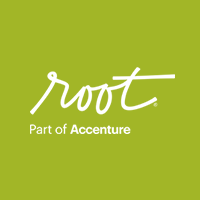The following excerpt from The Fearless Organization: Creating Psychological Safety in the Workplace for Learning, Innovation, and Growth by Amy C. Edmondson discusses the topic of psychological safety and shares reasons why this mindset is beneficial to an organization’s ability to nurture a culture of innovation. The book goes into more details—delivering insights and scenario-based explanations to help you bring this way of thinking to your organization.
What Psychological Safety Is Not
As more and more consultants, managers, and other observers of organizational life are talking about psychological safety, the risk of misunderstanding what the concept is all about has intensified. Here are some common misconceptions, along with clarifications.
Psychological Safety Is Not About Being Nice
Working in a psychologically safe environment does not mean that people always agree with one another for the sake of being nice. It also does not mean that people offer unequivocal praise or unconditional support for everything you have to say. In fact, you could say it’s the opposite. Psychological safety is about candor, about making it possible for productive disagreement and free exchange of ideas. It goes without saying that these are vital to learning and innovation. Conflict inevitably arises in any workplace. Psychological safety enables people on different sides of a conflict to speak candidly about what’s bothering them.
In many companies in which I’ve consulted or conducted research, I’ll hear a variation of the following: “We have a problem with ‘[Company Name] Nice’.” They go on to describe the common experience of being “polite” to one another in meetings, only to disagree later when people talk privately in the hallway, along with a tendency to not actually implement that which was discussed in the meeting. Nice, in short, is not synonymous with psychologically safe. In a related vein, psychological safety does not imply ease or comfort. In contrast, psychological safety is about candor and willingness to engage in productive conflict so as to learn from different points of view.
Psychological Safety Is Not a Personality Factor
Some have interpreted psychological safety as a synonym for extroversion. They might have previously concluded that people don’t speak up at work because they’re shy or lack confidence, or simply prefer to keep to themselves. However, research shows that the experience of psychological safety at work is not correlated with introversion and extroversion.1 This is because psychological safety refers to the work climate, and climate affects people with different personality traits in roughly similar ways. In a psychologically safe climate, people will offer ideas and voice their concerns regardless of whether they tend toward introversion or extroversion.
Psychological Safety Is Not Just Another Word for Trust
Although trust and psychological safety have much in common, they are not interchangeable concepts. A key difference is that psychological safety is experienced at a group level. People working together tend to have similar perceptions of whether or not the climate is psychologically safe. Trust, on the other hand, refers to interactions between two individuals or parties; trust exists in the mind of an individual and pertains to a specific target individual or organization. For instance, you might trust one colleague but not another. Or, to illustrate trust in an organization, you might trust a particular company to uphold high standards.
Further, psychological safety describes a temporally immediate experience. Whereas trust describes an expectation about whether another person or organization can be counted on to do what it promises to do in some future moment, the psychological experience of safety pertains to expectations about immediate interpersonal consequences. For example, when Christina fails to ask a physician about a medication she believes might be warranted, she is worried about the immediate consequence of asking her question – the risk of being berated or humiliated. Trust pertains instead to whether Christina believes the doctor can and will do the right thing for patients. One way to put this is that trust is about giving others the benefit of the doubt, and psychological safety relates to whether others will give you the benefit of the doubt when, for instance, you have asked for help or admitted a mistake.
Psychological Safety Is Not About Lowering Performance Standards
Psychological safety is not an “anything goes” environment where people are not expected to adhere to high standards or meet deadlines. It is not about becoming “comfortable” at work. This is particularly important to understand because many managers appreciate the appeal of error-reporting, help-seeking, and other proactive behavior to help their organizations learn. At the same time, they implicitly equate psychological safety with relaxing performance standards – that is, with an inability to, in their words, “hold people accountable.” This conveys a misunderstanding of the nature of the phenomenon. Psychological safety enables candor and openness and, as such, thrives in an environment of mutual respect. It means that people believe they can – and must – be forthcoming at work. In fact, psychological safety is conducive to setting ambitious goals and working toward them together. Psychological safety sets the stage for a more honest, more challenging, more collaborative, and thus also more effective work environment.
Excerpted with permission of the publisher, Wiley, from The Fearless Organization: Creating Psychological Safety in the Workplace for Learning, Innovation, and Growth by Amy C. Edmondson. Copyright (c) 2019 by John Wiley & Sons, Inc. All rights reserved. This book is available wherever books and ebooks are sold.
Notes:
- Edmondson, A.C. & Mogelof, J.P. “Explaining Psychological Safety in Innovation Teams: Organizational Culture, Team Dynamics, or Personality?” Creativity and Innovation in Organizational Teams. Ed. L. Thompson & H. Choi. Mahwah, NJ: Lawrence Erlbaum Associates Press, 2005: 109–36.
- This is a modified version of the framework first published by Edmondson, A.C. “The Competitive Imperative of Learning.” Harvard Business Review. July–August, 2008. Print. It was later published in Edmondson, A.C. Teaming: How Organizations Learn, Innovate, and Compete in the Knowledge Economy. San Francisco: Jossey-Bass, 2012. Print.





